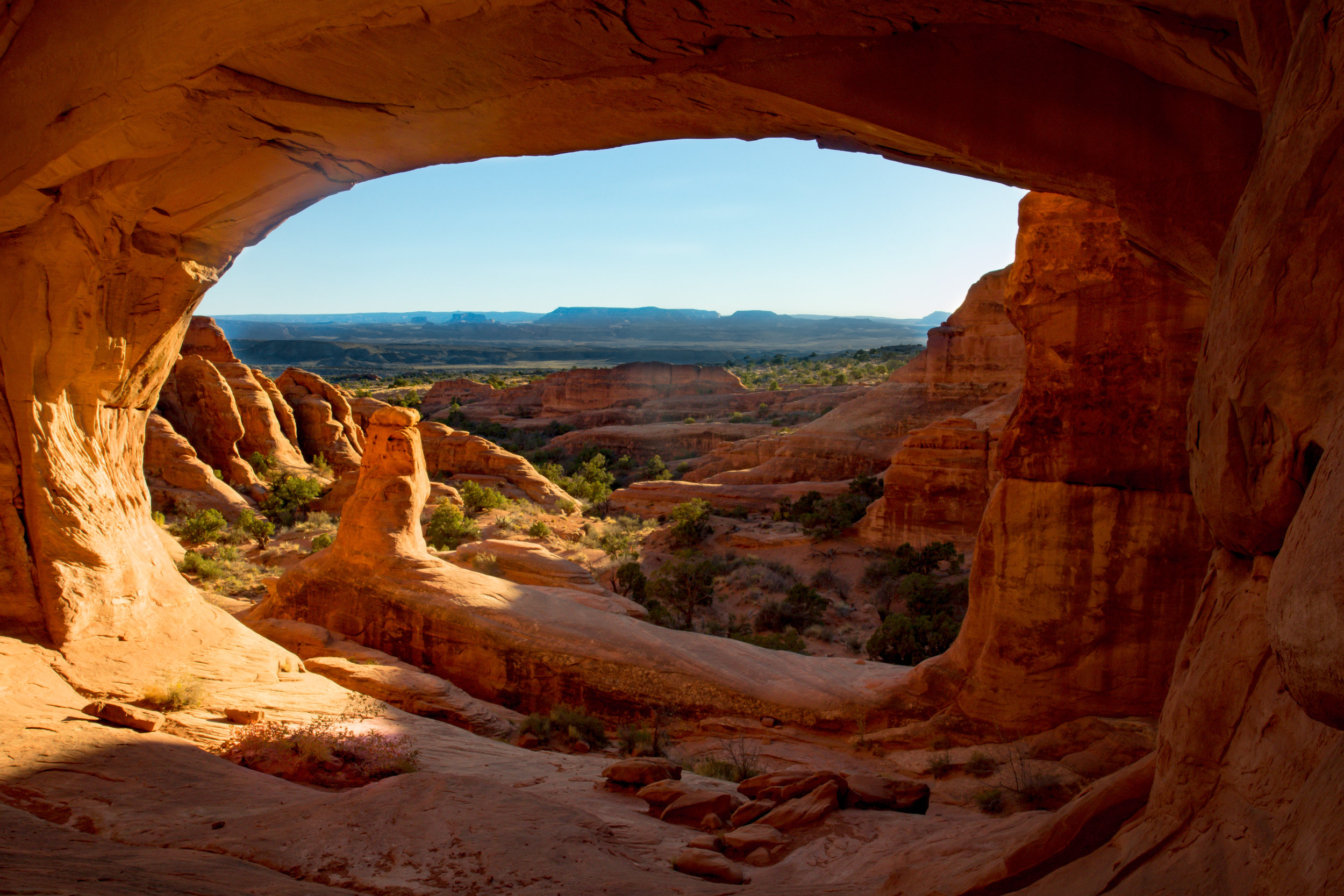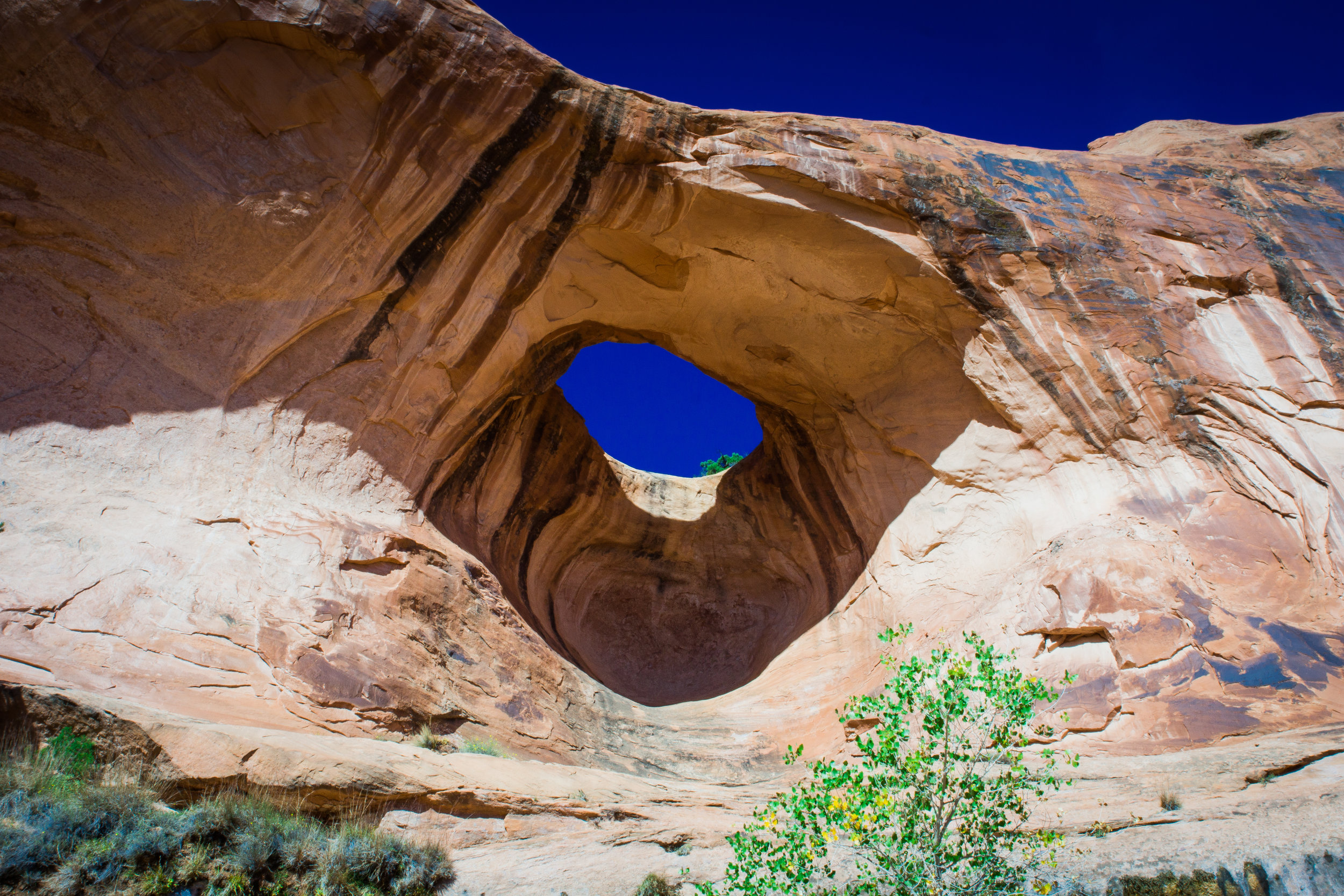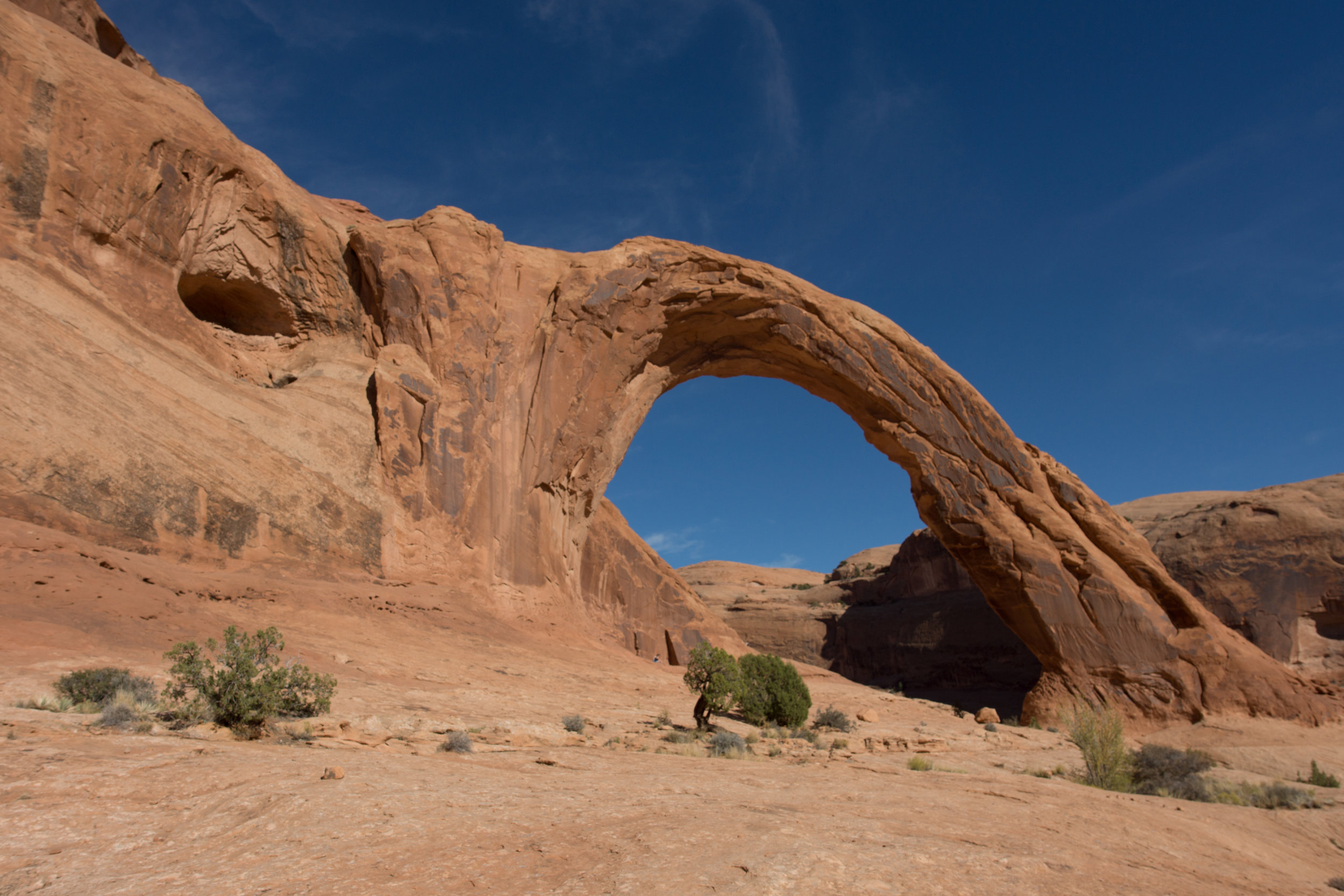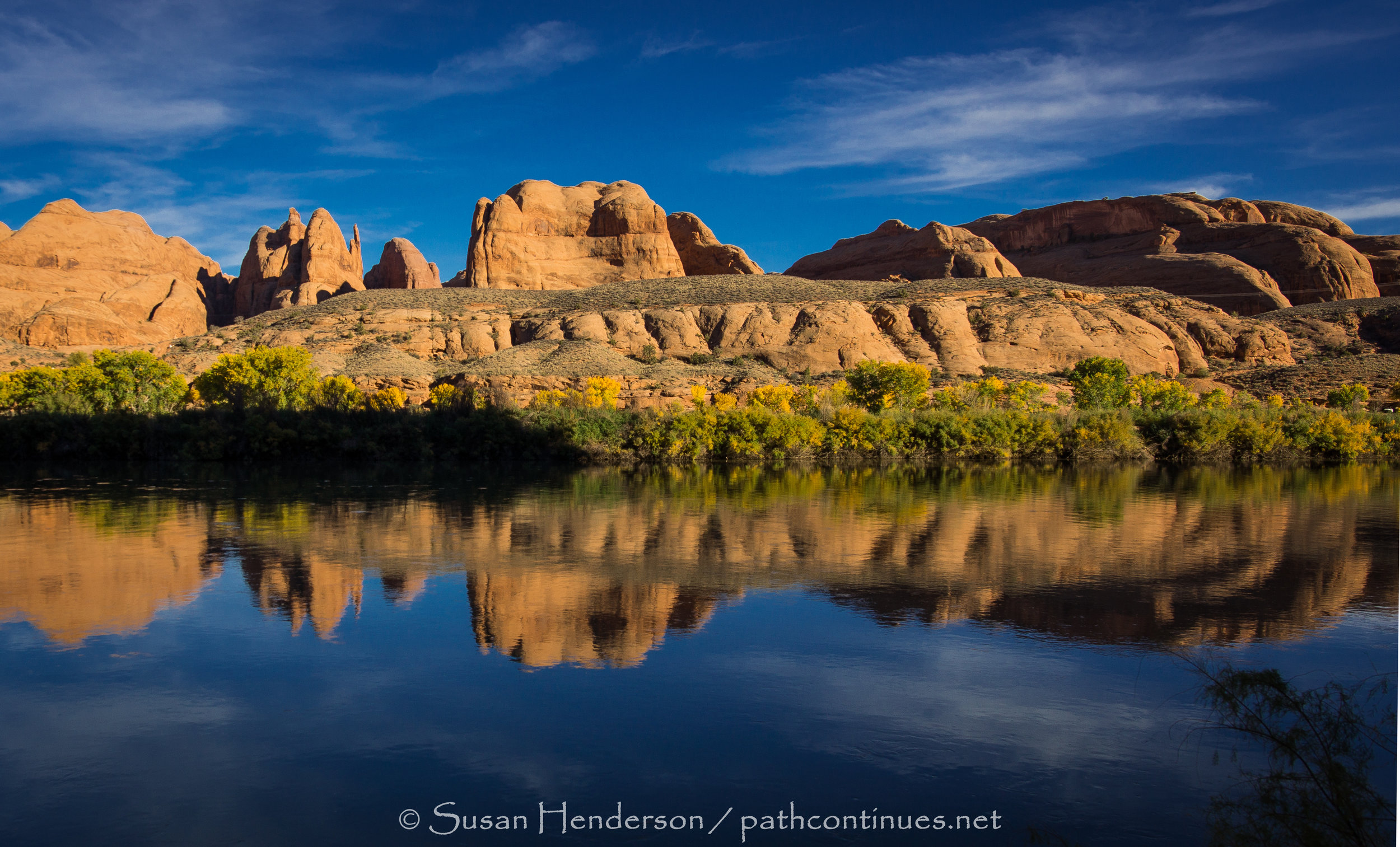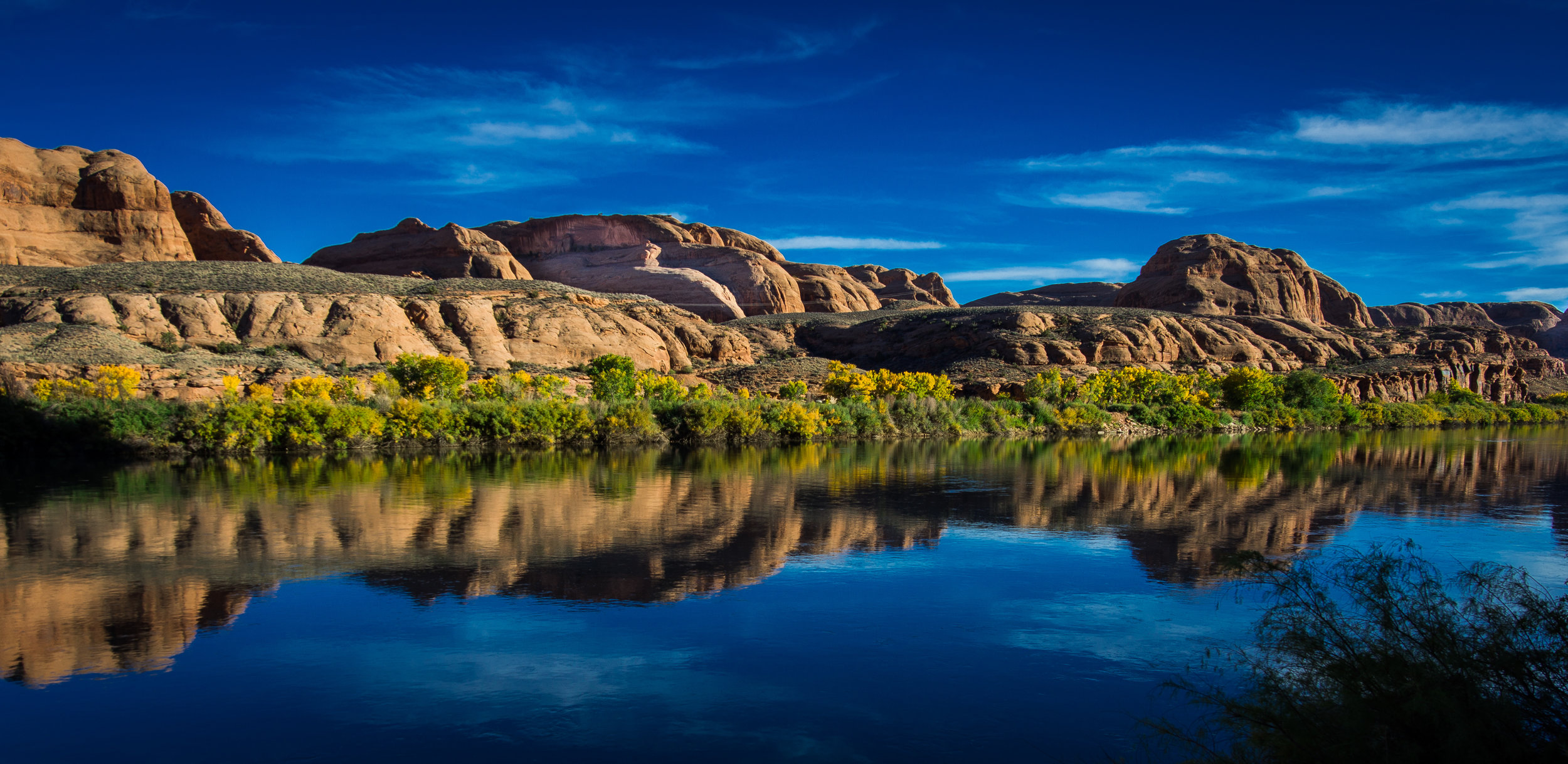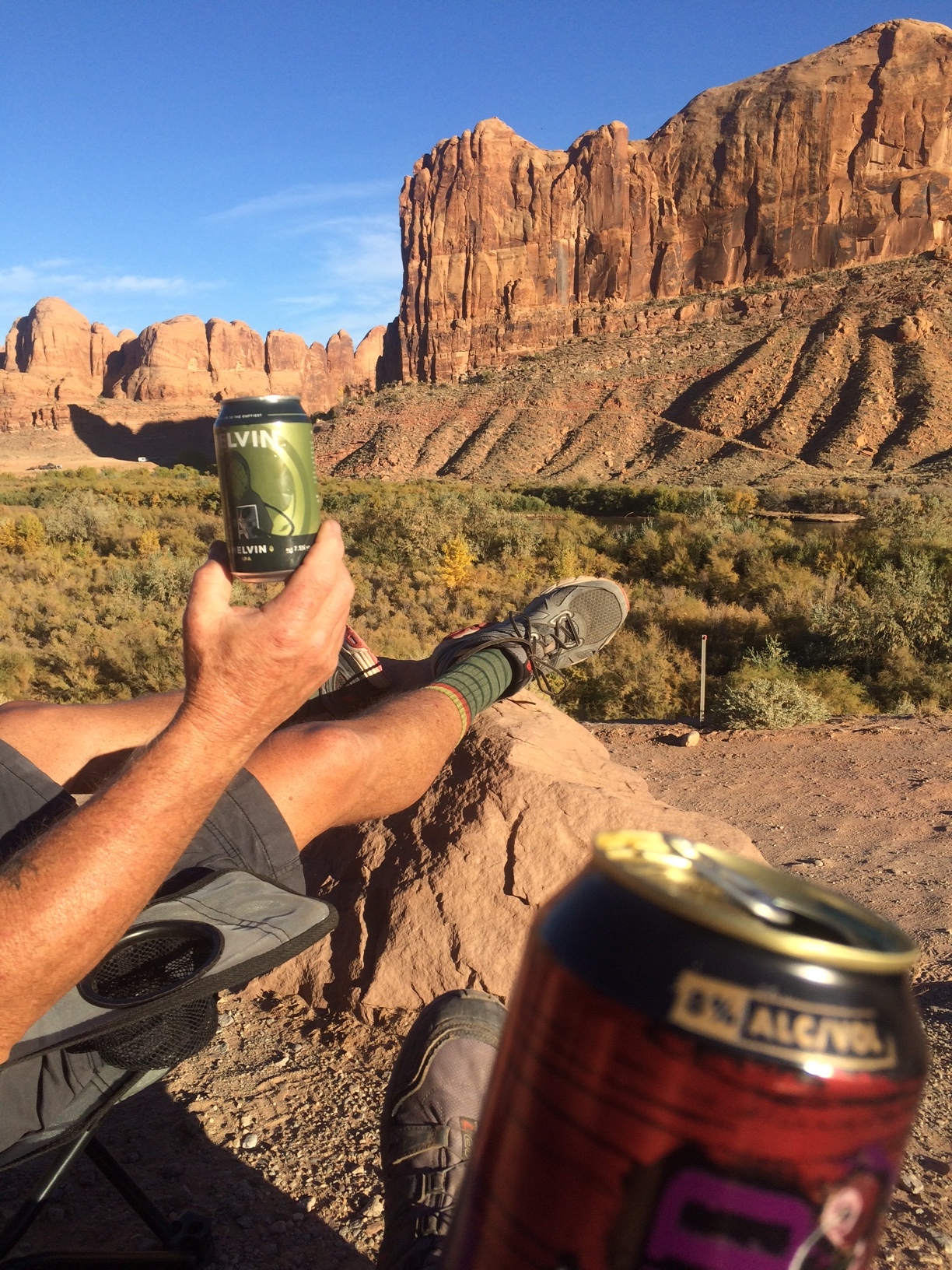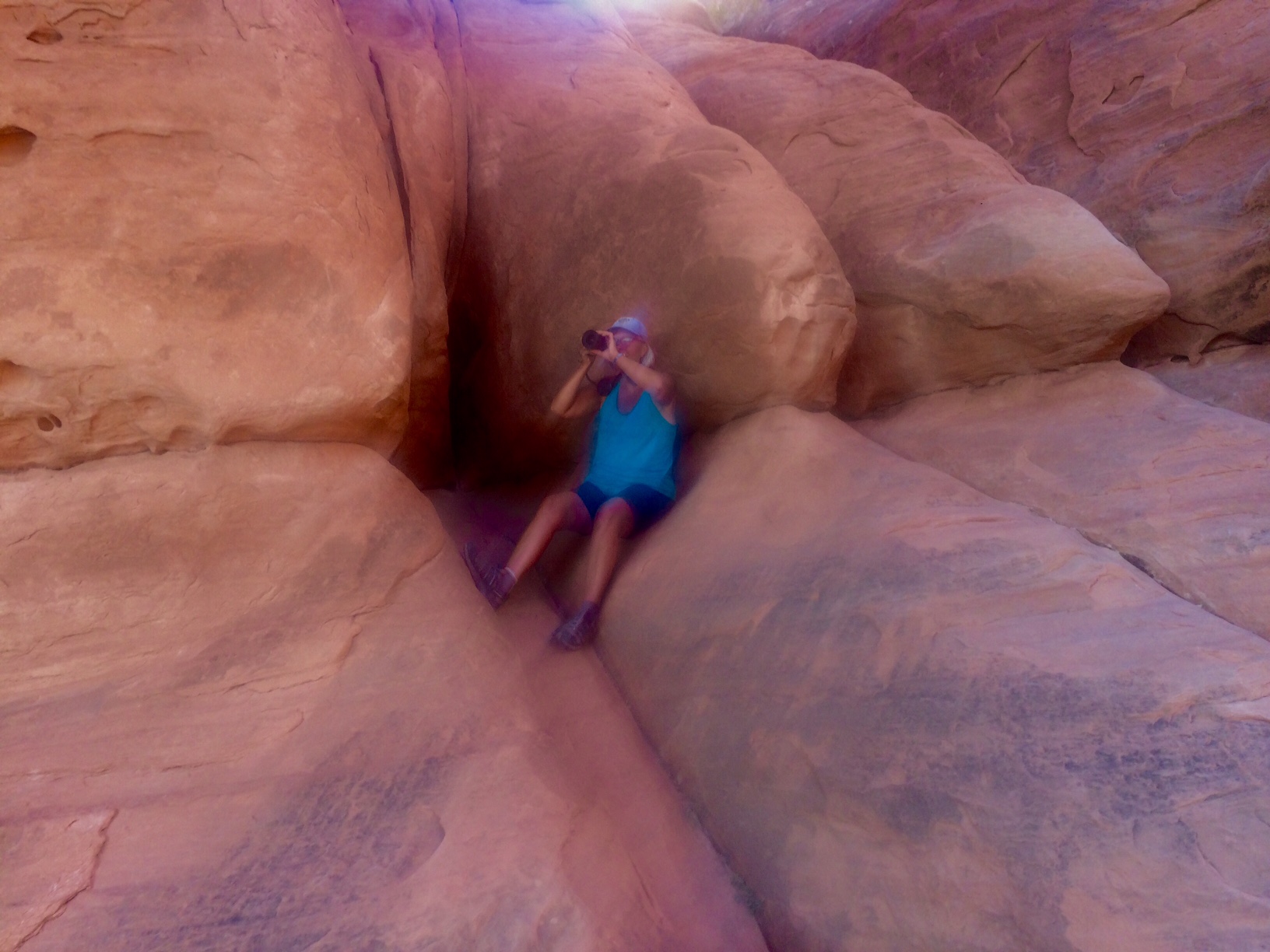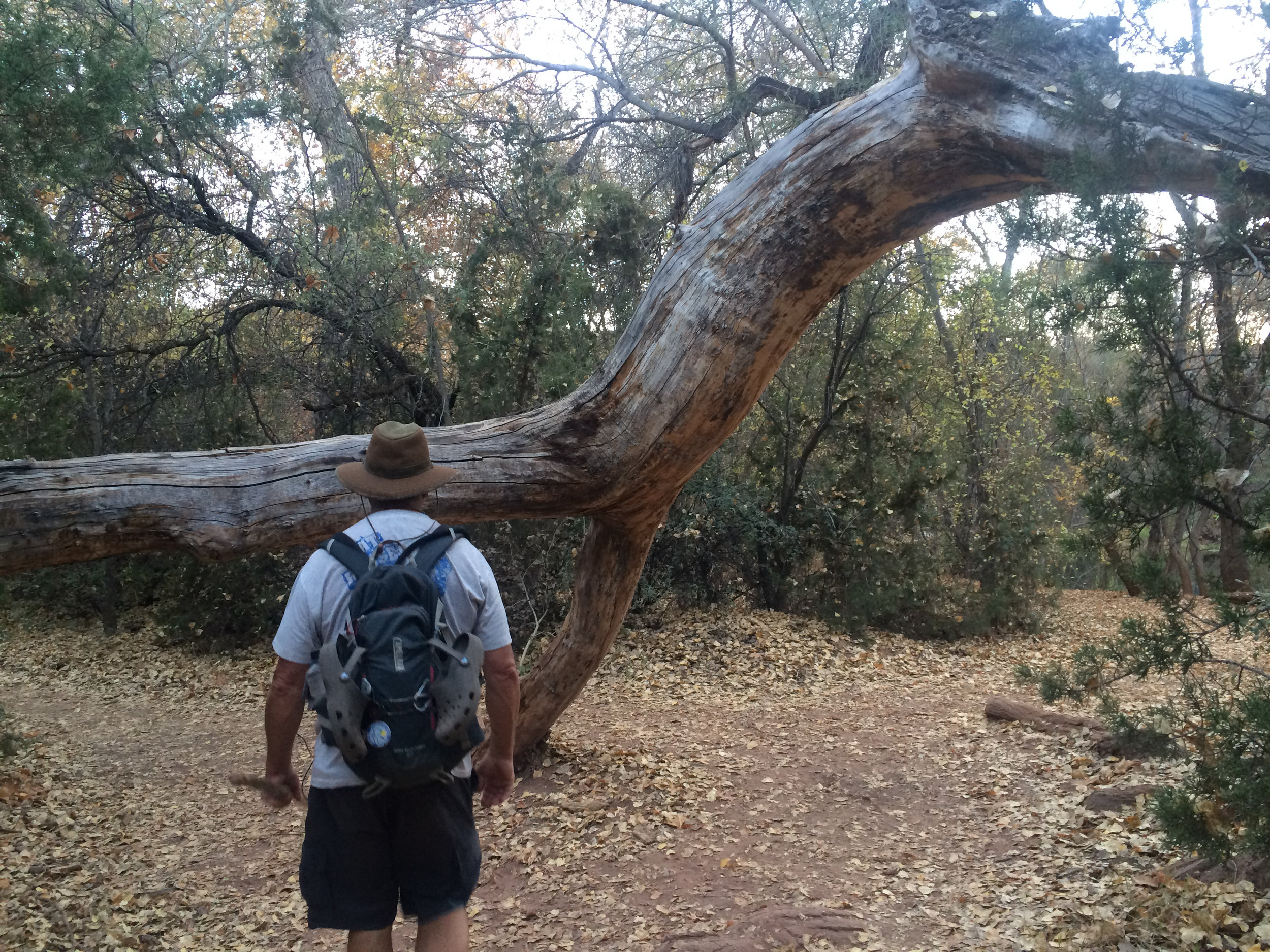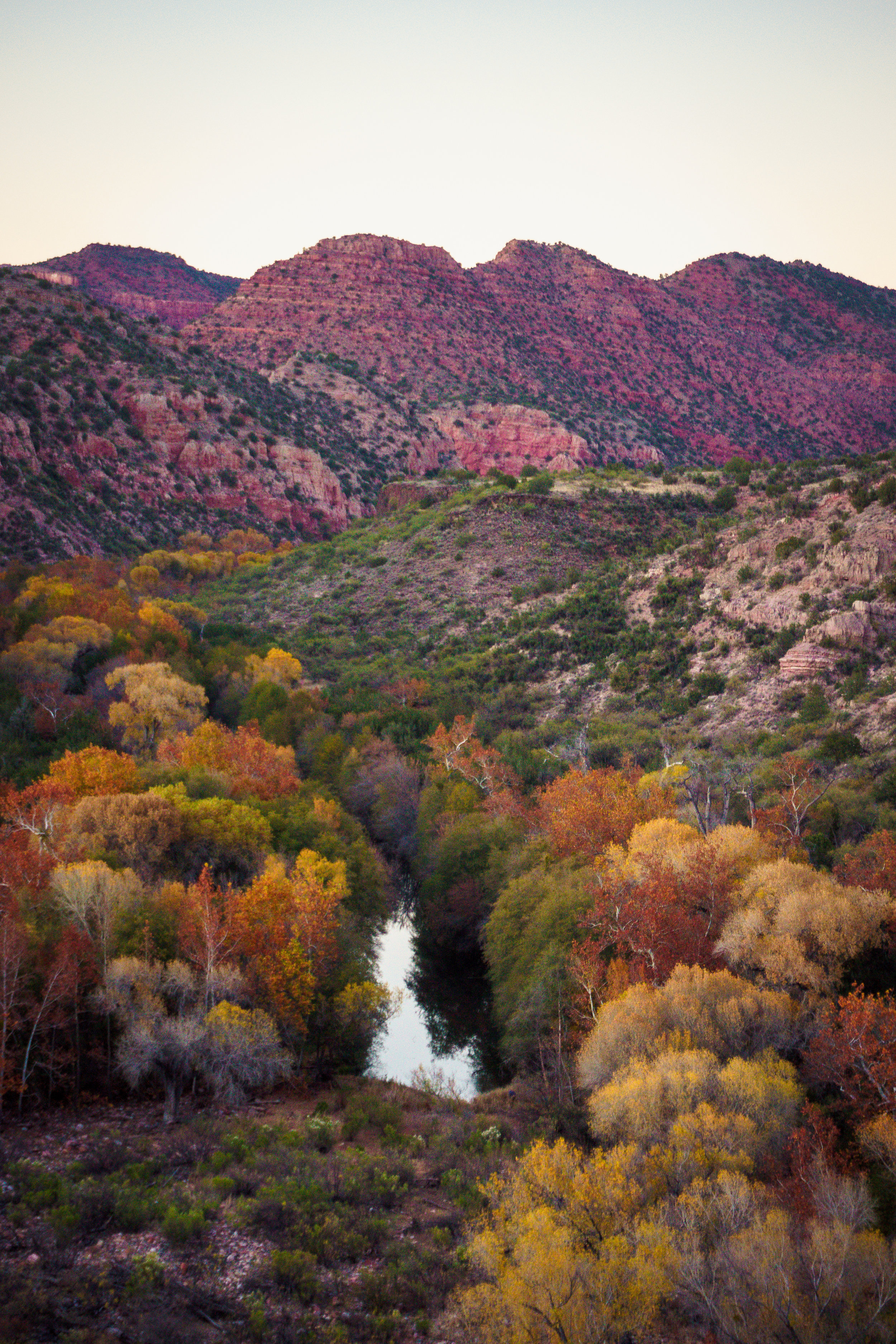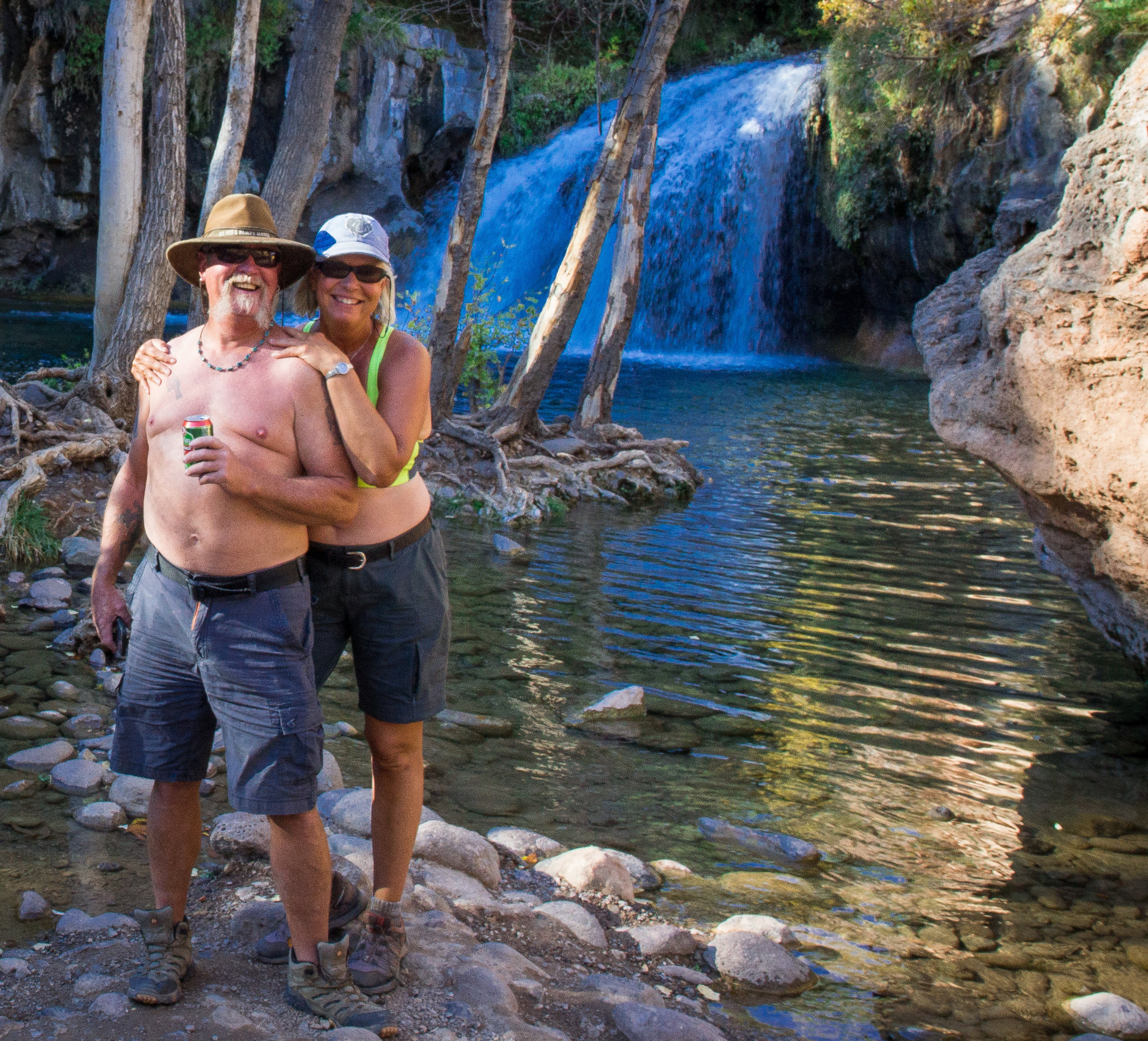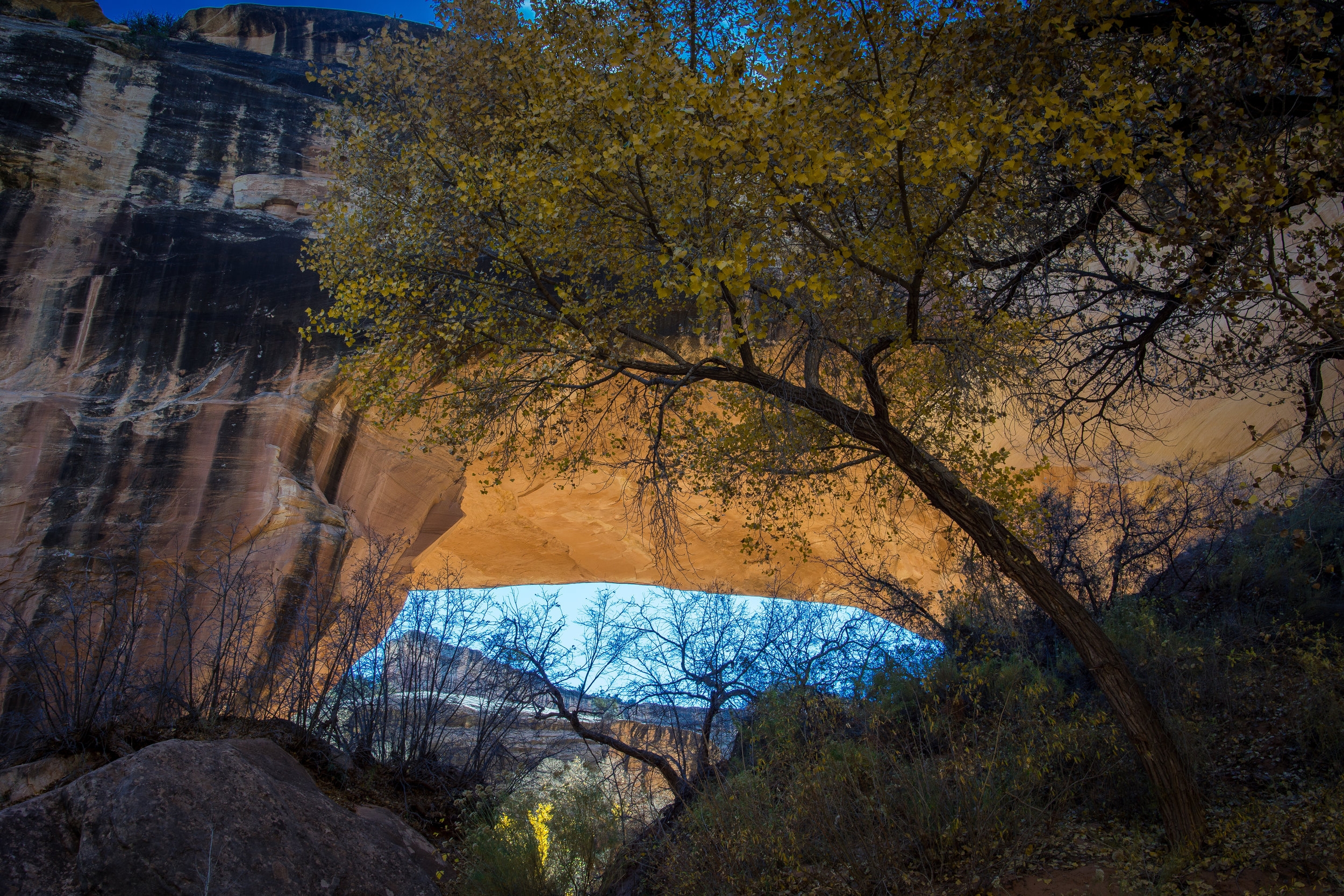Day 268 - Still loving it
This Life We Live
We are camped outside Cottonwood, AZ for the next few weeks. A 20 minute or so drive northeast to the red rock hiking haven of Sedona, and about 45 minutes from the peaceful forests of Prescott to the southwest. It suits us well. This is our sixth extended visit to the area, and it gets more comfortable every time we arrive. As they say, “Home is where we park it”.
Over the last few weeks we seem to have run into more people that ask “where are you from?” Our answers range from “wherever our house is” to “we are nomads” and sometimes we just give them a big smile and say “wherever our hearts take us”. We see the look of confusion wash over the face, and then the "aha" moment. "Oh you mean you live in a RV?" Some people have A LOT of questions, and others like to also share their experiences. We do get the occasional glance that can only mean - "gee, I feel sorry for you, you are homeless."
We follow the weather, in search of 80’ days and 40’ nights. North and south, east and west, we travel along staying a few days or a few weeks – just depends on how much we find to our liking in the area.
We realize that this life isn’t for everyone. We live frugally, but not poorly. We take care of ourselves, both mentally and physically….and we take care of each other. Day 268 of what we hope will end up to be in the 1000’s.
Sycamore Canyon
Sycamore canyon is second only in size to the Grand Canyon in the red rock country of Arizona. Stretching from Cottonwood to Williams it is only accessed by horseback or foot. The trail starts with a steep 200' stair step descent into the canyon. Once you arrive at the bottom it follows a lovely tree lined path along the spring fed creek. Sycamore and oaks trees mix with the colorful cliffs and towering pinnacles.
We had attempted to do this trail back in the spring of this year, but at the first stream crossing, of six, we were thwarted by the massive flowing runoff. At that time the water was up to Bob's thighs and flowing fast. To dangerous for me and the water was cold..cold..COLD!
This time we came prepared with water shoes and strong hiking poles. We lucked out with summer time temps on a beautiful fall day. The water was cool and only slightly above our ankles at the crossings. The trail continued winding through the canyon and eventually we did 6 crossings before reaching the springs.
Midway on the trail we came across a beautiful deep swimming hole that would probably be where we would stop next time we do the hike. It is about 3 miles in, making for a nice 6 mile round trip day hike. I don't know why we are always so far off on mileage but this round trip took us about 10 miles, while the trail guide said it would be closer to 7.5. The climb back up out of the canyon was easier than I remembered it in the Spring though, so all the hikes this season seem to be paying off in more ways than just enjoying the beauty of the land.
So glad we re-did this hike in the fall. The colors across the canyon where so beautiful in the late afternoon light. It's always a great day when you arrive back to the jeep with dirt crusted and tired legs.
Directions. Take Highway 89A South from Sedona to Cottonwood AZ. At the junction of Arizona 260 and US 89A, go right and proceed 1.4 miles to Historic 89A. Turn north and drive 3.8 miles to the turnoff to Tuzigoot National Monument. Turn right and proceed 0.4 miles, then turn left on Sycamore Canyon Road and proceed 10 miles to the trail head. Most of Sycamore Canyon Road is unpaved, but it is passable to family sedans except during periods of heavy rain.
Fossil Creek for Thanksgiving
Thankful for the beauty of nature
Thankful for our family
Thankful for our health
Thankful for the life we lead
Thankful for this very special Thanksgving Day
Sedona Trails
One of the best things about Sedona, besides the beauty around every turn, is the fact that there are so many trails we can take off in two different directions and both get what we are looking for. Bob on his wheels, and me on my feet - a great day for both.
A Day in Ruins - Exploring Anasazi Country
Spent the day traveling along Hwy 95 in search of ruins from the Anasazi period. Found three sites that gave us a wonderful representation of this period of history.
Butler Wash Ruins
Canyon Cave Tower
House on Fire
Kachina Bridge 210' high, 204' span, 44' wide, 93 feet THICK
Thank you Mr. Roosevelt
This one ranks right up there as one of our favorite, and hardest hikes so far this year. Located inside Bear's Ears National Monument, Natural Bridges was discovered by a prospector, Cass Hite, in 1883. It wasn't until 1904 though that the discovery was publicized in National Geographic, and in 1908 President Teddy Roosevelt proclaimed it to be a National Monument, creating Utah's first National Park System area. THANK YOU Teddy Roosevelt!!! The bridges have had a few names over the years but in 1909 they were given Hopi names to better reflect the area's history and culture.
About a 45 minute drive from where we are boondocked north of Blanding, we stopped at the visitor center and picked up a map of the park and asked about the hiking trails. We knew we didn't want to do the "drive-walk to edge-look down into canyon at bridge-get back in car" thing. We wanted to be able to get down under the bridges to truly experience the magnitude of them. The volunteer gave us some great info and off we went.
We drove to the farthest bridge, Owachomo, which means "rock mound," parked and got all our stuff together and set out. We knew it was going to be about a 10+ mile day, and it was warm, so lots of water and snacks came with us.
Bridges differ from arches as they are caused by the erosive action of moving water, where arches are caused by other erosional forces - frost action, seeping moisture. A nice gentle sloping 180' down over large slickrock took us to the bottom of the canyon. We were under Owachomo, the first of three bridges we would explore on the hike. Somehow - this is where I should explain that neither one of us were really paying attention when we got the map - we were hiking the canyon in a clockwise direction, when we should have gone out over the top of the mesa a few miles, then dropped down into the canyon at another bridge and walked the 7 or so miles back to the car. Climbing out at Owachomo (180').
We never saw a soul on the trail until about 4 miles in. After stopping and talking with fellow hikers, we realized what we had done, and that we got to look forward to the 500'+ climb back out of the canyon at the end. Didn't spend too much time thinking about it because the beauty that surrounded us overtook our senses. The canyon was filled with towering cottonwoods just turning vibrant yellow, tall sagebrush, junipers and cacti.
We came upon the second bridge, Kachina, named for rock art that resembles symbols commonly used on kachina dolls, and wandered around the base with our mouths open in awe. It is massive, 210' high/ 204' long and 44 FEET across the center and 93 FEET thick! When you stop and think about the water that flowed under this bridge to create it...well it is mind blowing to me.
We continued up the canyon crossing the dry stream bed over and over as our shoes filled up with the fine red sand that makes up most of the trail. I kept looking up at the canyon walls that rose above us and thought "yep, at some point we have to climb UP and OUT of here".
We arrived at the last bridge, Sipapu, which means "place of emergence," and I thought how fitting! We were going the right way after all, we were going to EMERGE out of the canyon at just the right spot. Then....I saw the way up.
I am not good with heights, but I have gotten better. It takes me awhile to climb straight up, my breathing takes time to catch up to what my legs feel they can do. But up..uP..UP we went. Using the handholds and ladders placed into the rocks, THANK YOU PARK SERVICE, we scrambled and made our way up the 500' face of the canyon. Feeling a profound sense of accomplishment when we got near the top, we sat and gazed out over the canyon, feeling thankful that we had taken the direction we had. Bob and I both agreed that going DOWN the 500' would have been extra hard on his knees, and on me - because I would have had to actually see how high up we really were and what the drop off was going to be.
When we got to the top we set off across the mesa back to our jeep. The three miles or so was very different than the canyon. This area was filled with slickrock and tall juniper. Back at the jeep we collapsed in our chairs, got out our adult beverages and settled in for the sunset. Beautiful day, beautiful hike. Once again so thankful that those that came before us had the foresight to preserve these natural beauties for us to enjoy a hundred years or so later.
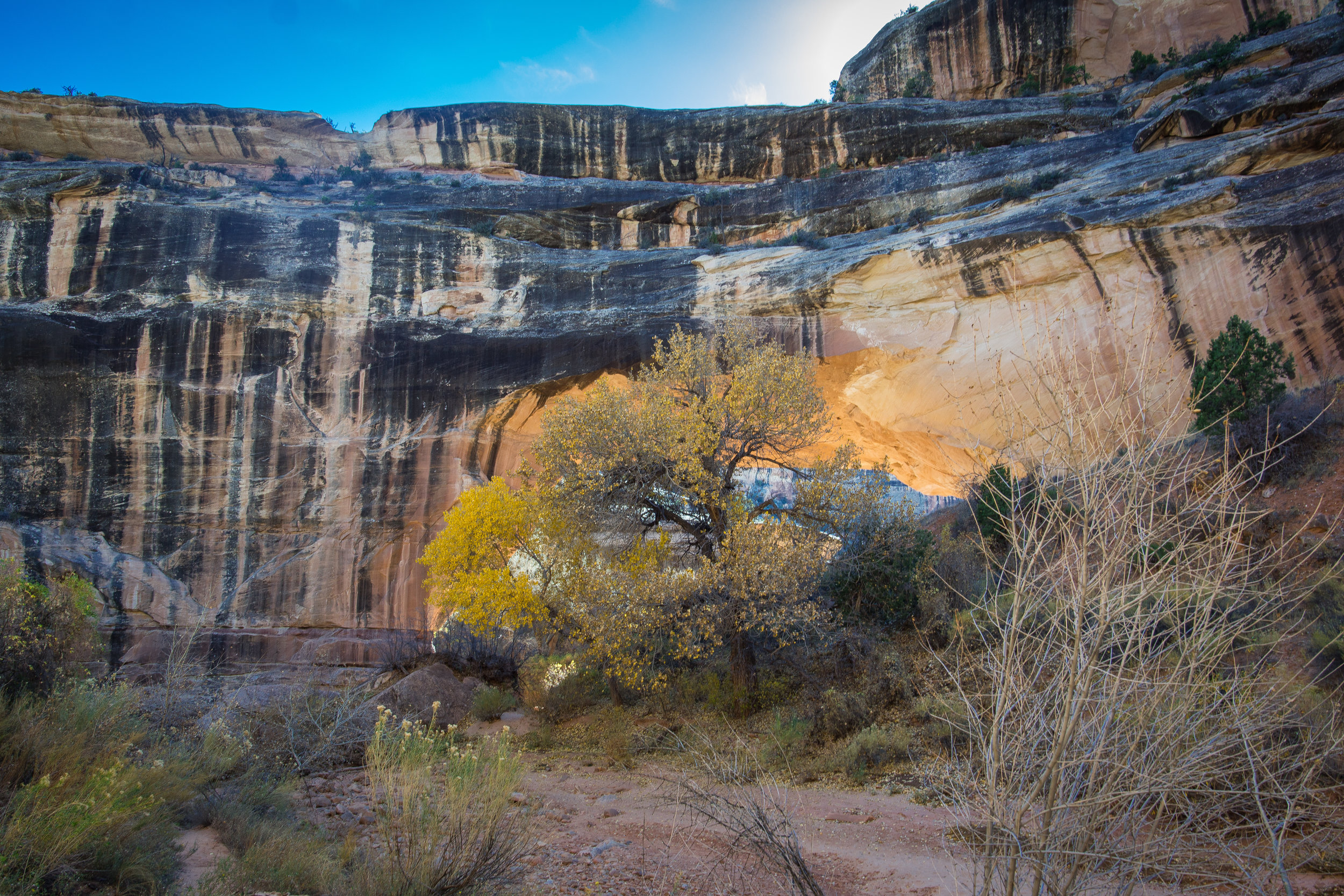
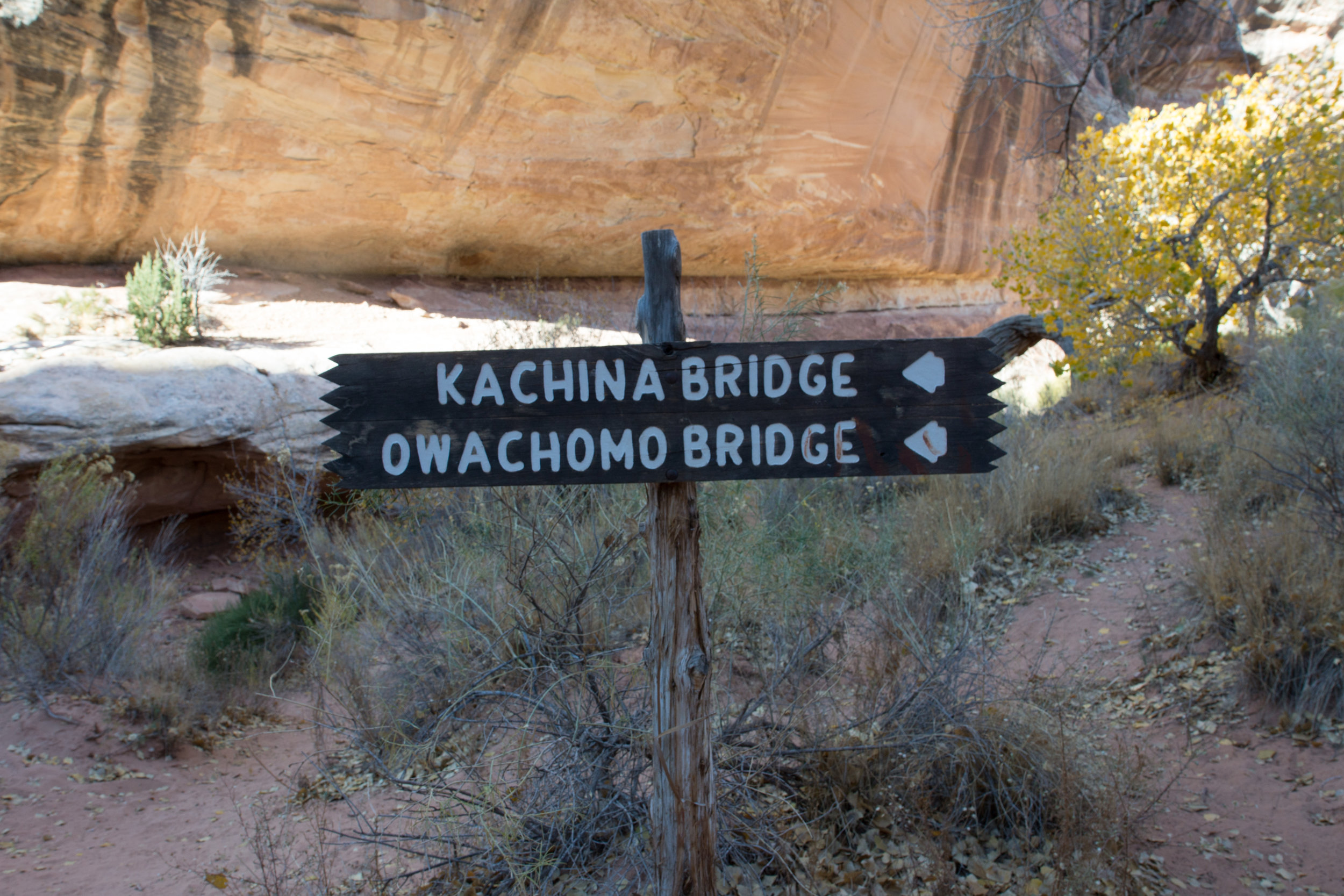
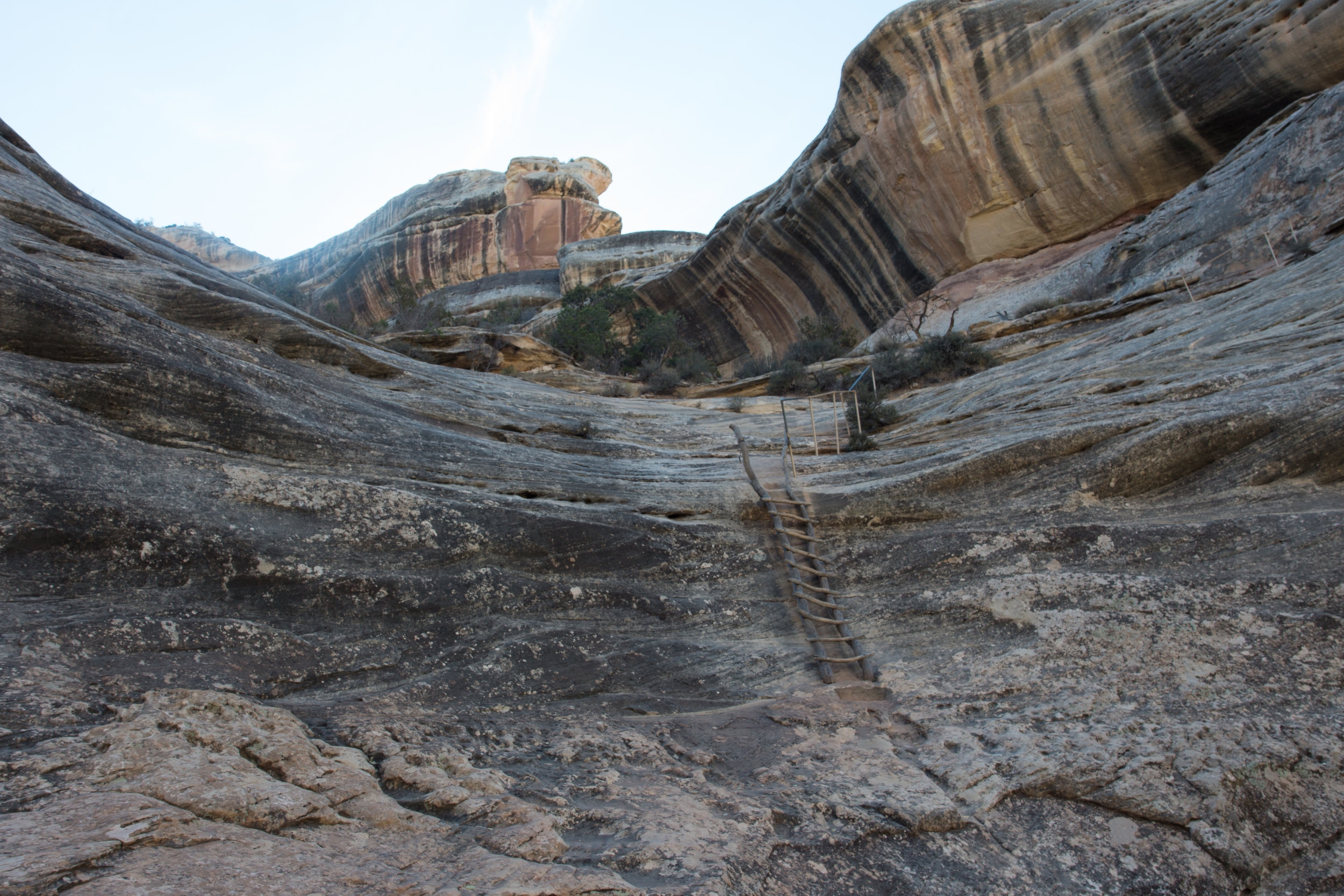



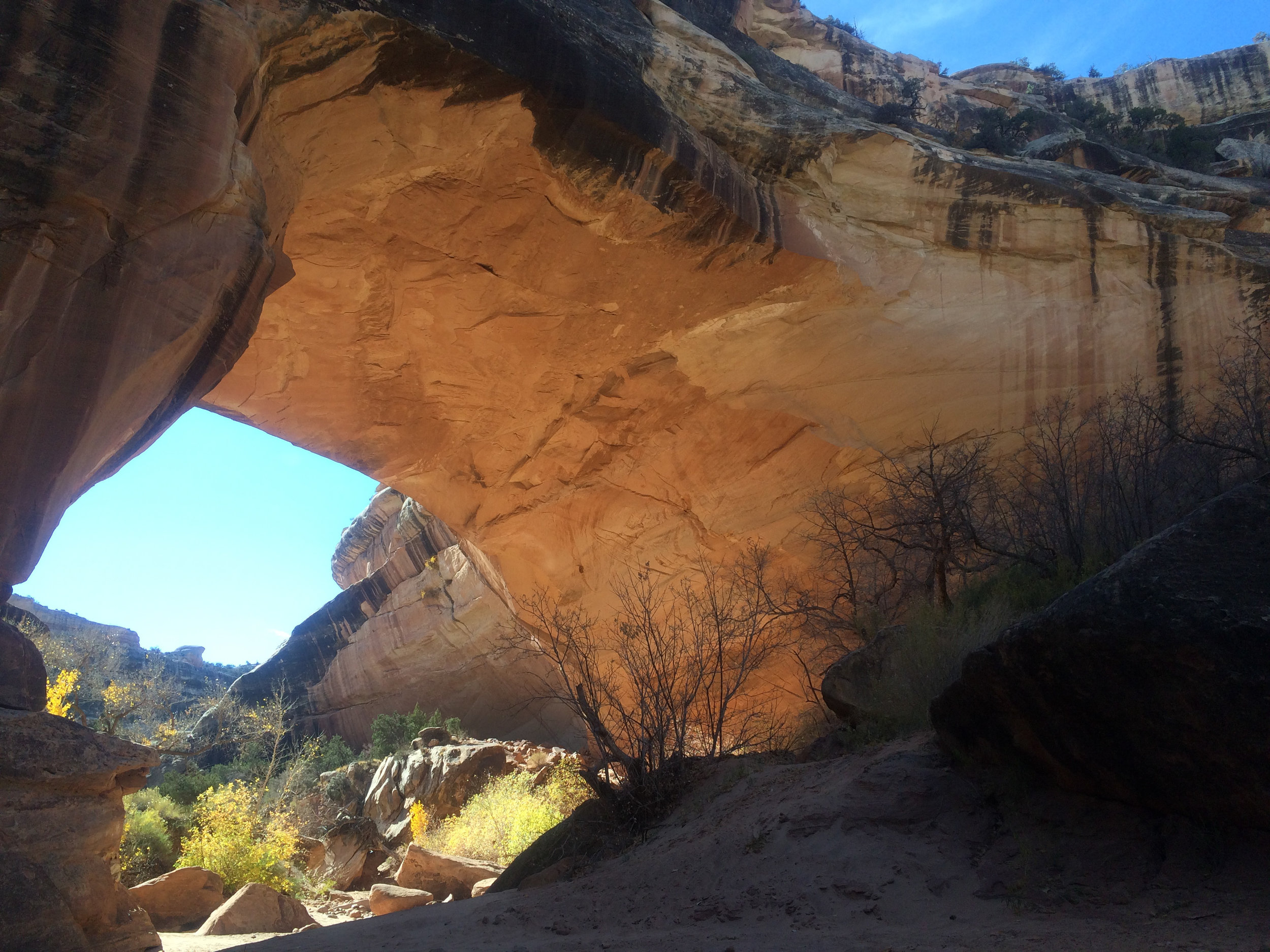




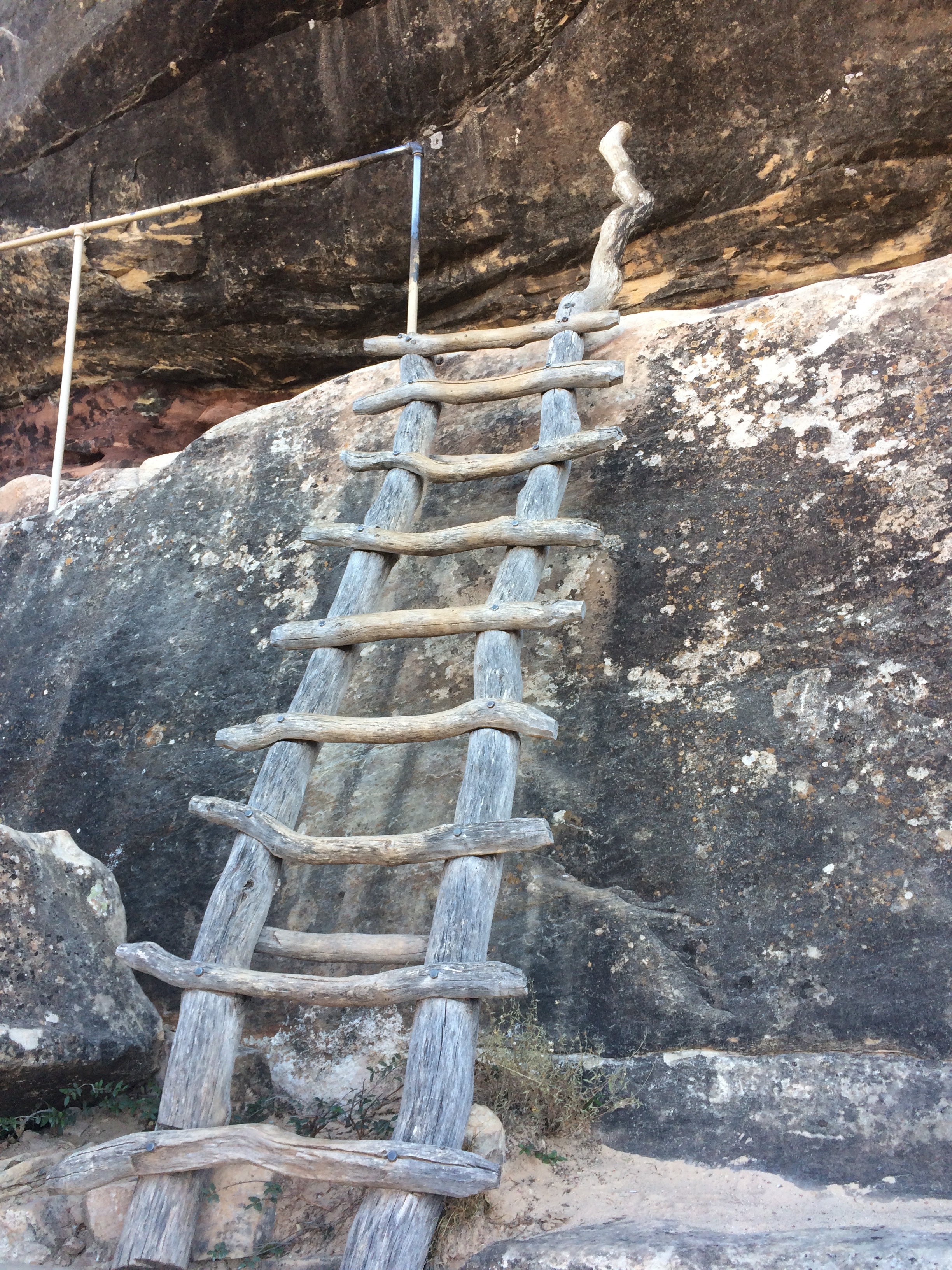
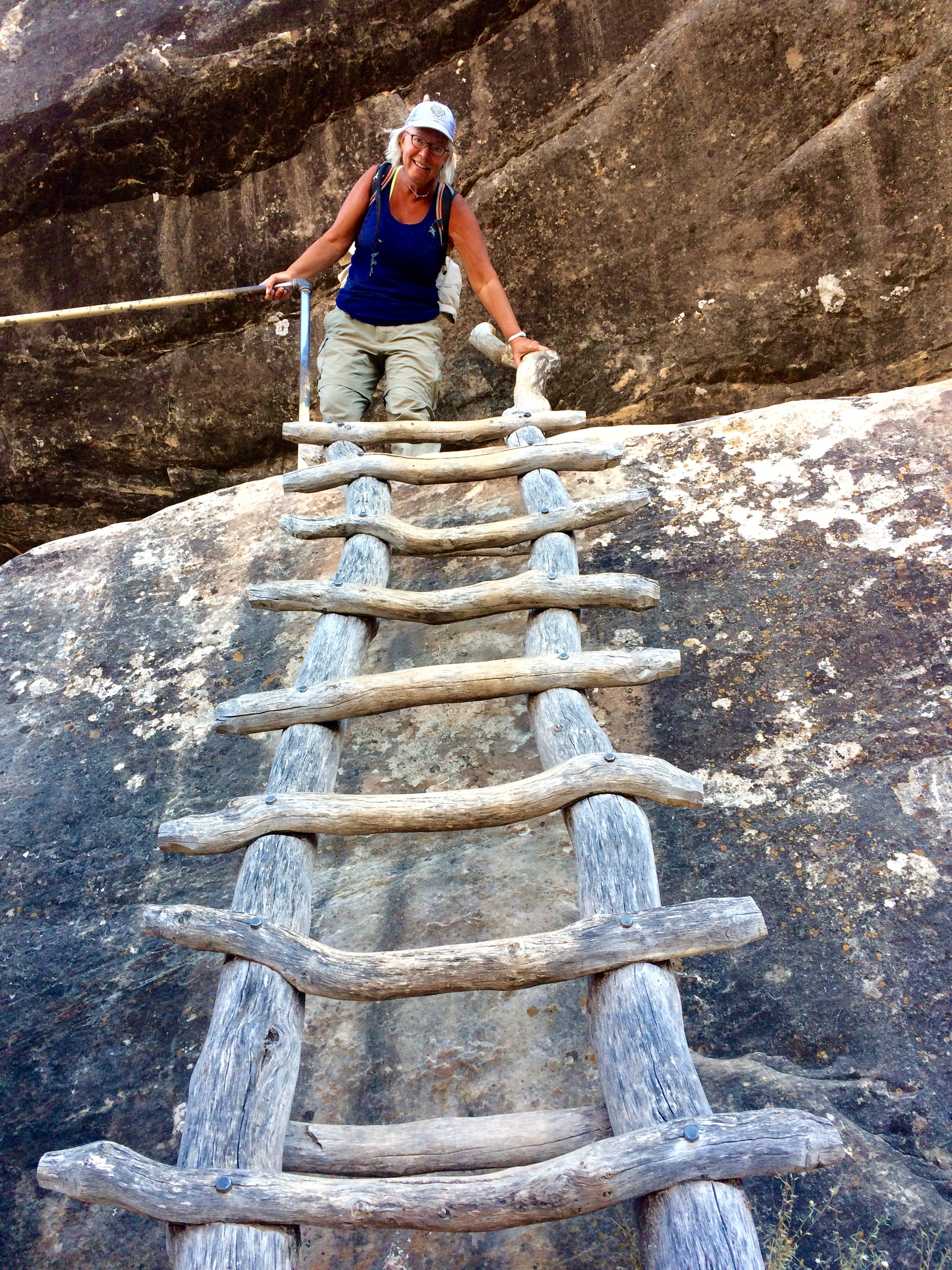
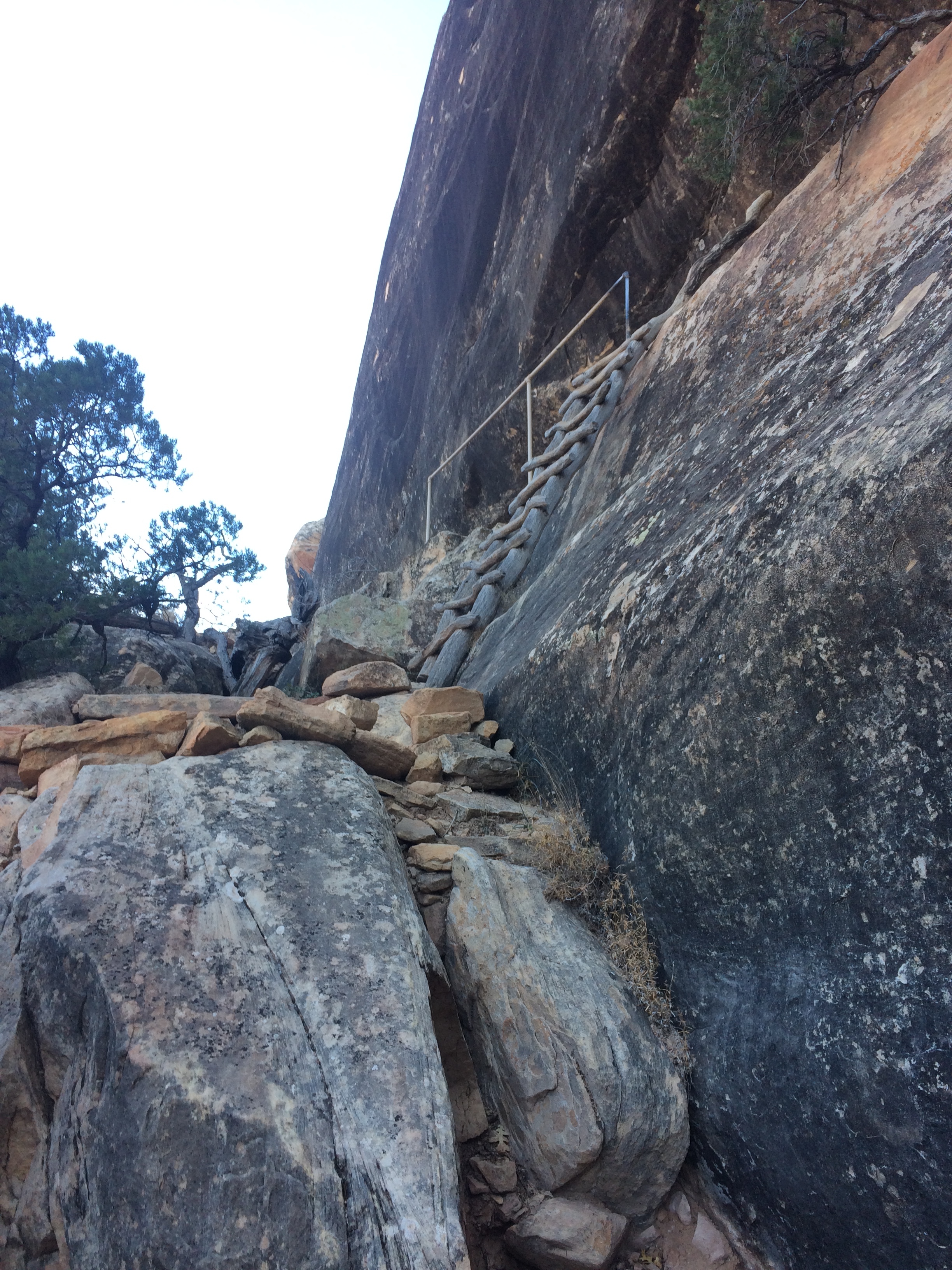
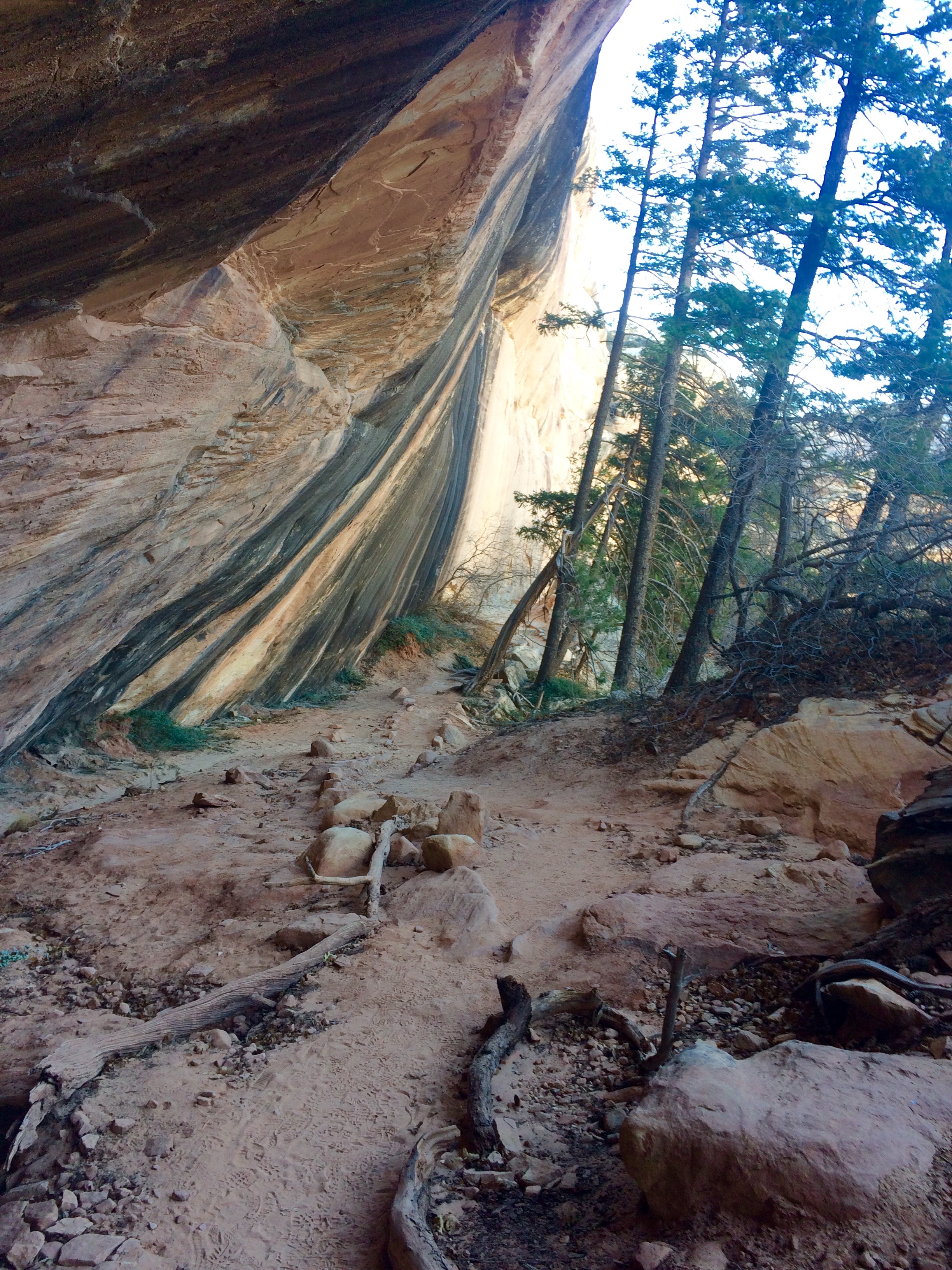
The Path to Bear's Ears
Finding our Space
We left Moab after an amazing three weeks and hit the road south towards Blanding, UT and Bear’s Ears National Monument. Bob had found us a place through freecapsites.net and it sounded ideal. We were only moving about 70 miles this trip so it was definitely going to be one of our shortest moves ever, but it would put us right in the heart of the monument.
Bear’s Ears is massive, covering over 1,351,849 acres of public land. There is quite a bit of controversy surrounding the designation of this area, and I am not going to get into the pros and cons and politics here. What I will say is that after spending a month in this area, we have changed some views….in both directions. Do some research, visit and spend time here. Get to know some of the local people and listen to their thoughts. You will be rewarded in many ways.
We knew that we would need a more centralized location to be able to visit many parts of the monument over the next couple weeks. The directions to get to our spot were a little vague, and we took the wrong road into Recapture Reservoir. Luckily, we had room on the dirt road to unhook the jeep and turn the motorhome around. Drove up to the south end of the lake and I went down in the jeep to check it out while Bob stayed up top. GOOD THING! The dirt and large rock filled road was sketchy even in the jeep, and the straight drop off down the side of a cliff didn’t help. I found a place to turn around and came back up and met Bob at the top, so thankful that he hadn’t made a decision to follow me. We went on into the town of Blanding and stopped at the visitor center and had a great chat with the volunteer. He got us headed in the right direction and we found the wide paved road that led down to the lake. (directions below). Set up camp right near the water, cottonwoods gently blowing in the breeze and the signs of deer prints all around us. We were the only ones there and we watched as the sun set over the lake through the bright yellow leaves of the trees.
The next morning, we decided that we would go ahead and leave the bus there and go exploring. Quickly we realized that it was at least a 75-mile round trip sort of day each time we ventured anywhere. Blanding put us central to what we wanted to see, and the only other boondock area we came across would have put us close to one area, but 125 miles from others.
Over the next week we ventured to Natural Bridges National Monument, Newspaper Rock, Canyonlands, Elephant Hill, Mule Canyon, House on Fire and more. Pics and posts on those to follow.
Hints: The reservoir is great for any size rig.
Directions: If coming from the north on Hwy 191, GO PAST the actual lake and then take the first right after you go around a small mountain. The road is “Radio Hill”. Follow the paved road to camping area. There is a dumpster there, and also a pit style toilet.
From the south, go approx. 5 miles north of Blanding, watch for the Napa on the right, then look for the brown sign that says “Recapture Reservoir Recreation Area“. Turn left on Radio Hill road. Follow the paved road down to the camping area.
Blanding: The museum was lovely, and the volunteers extremely helpful. Once we explained what type of hiking we were looking for, and our ability levels, they got out all kinds of hand drawn maps that they had made themselves and gave us great descriptions and ideas for hikes. They also have a fast free wireless, and a small room where you can plug in and charge and work if needed.
Marching Men to Tower Arch
One of our favorite, and toughest hikes, in Moab this year was to Tower Arch. I don't know if it was the extremely warm day, or the fact that I had already hiked to three other arches before this one, but it was a long one. We entered off the paved road through the park instead of taking the 4-wheel drive road from our campsite area. The hike in was soft sand in parts but mostly sandstone rock. The Marching Men formation so accurately described the towering sculptured rocks. Around a few more corners and we arrived at Tower and we made the decision to see if we could get up in the arch to get the "window" shot I had seen in others photos. So glad we did. Another great day in Moab.
